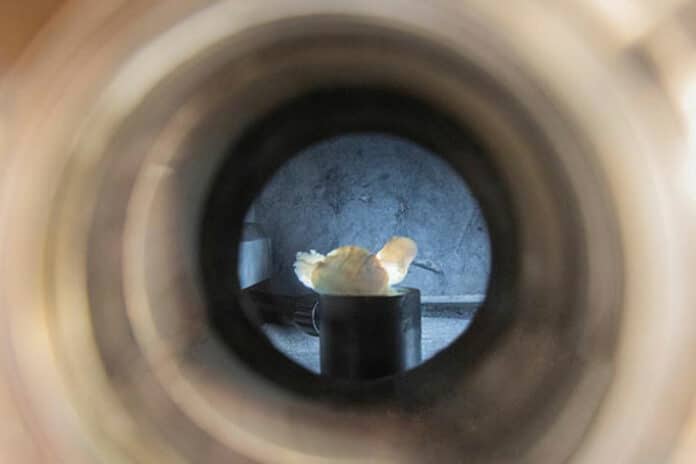A fundamental understanding of the thermal behavior of reinforcement materials is crucial to fully exploit their properties in composites. Boron nitride nanotubes, or BNNTs, are stronger and more resistant to high temperatures than carbon nanotubes. Like their carbon cousins, they are structures measured by the nanometer—a length equal to one-billionth of a meter.
In a new study, a team of FAMU-FSU College of Engineering researchers at the High-Performance Materials Institute explored the thermal limits of advanced nanomaterials. This is the first-ever study on how purified boron nitride nanotubes remain stable in extreme temperatures in inert environments.
The scientists discovered that BNNTs are completely stable in an inert environment, or the chemically inactive atmosphere in which they are produced, at temperatures up to 1800°C. Additionally, they discovered that BNNTs can endure brief exposure to temperatures of 2200 °C without losing the mechanical characteristics that make them so powerful.
Assistant Professor in Industrial and Manufacturing Engineering Rebekah Sweat said, “This research is about uncovering a property that is incredibly useful for the future. We have a more robust knowledge of how BNNTs perform when and how they thermally fail—because all materials have limitations. We have changed how we make these composites to better utilize their properties.”
“Potential applications for these light, strong composite materials are numerous. Anything that gets hot, like a turbine or engine, might use them to function in a high-temperature environment. They are thermally conducting, which means they spread heat out quickly, and their mechanical stability offers structural reinforcement.”
Lead author and doctoral student Mehul Tank said, “Understanding the behavior of these nanotubes at high temperatures is crucial for creating materials that can withstand extreme conditions, both in manufacturing and in their final use. As we understand better how they function in these conditions, we’ll be able to develop better manufacturing of composites that employ high-temperature processing matrices, like ceramics and metals.”
Journal Reference:
- Mehul J. Tank et al, Extreme Thermal Stability and Dissociation Mechanisms of Purified Boron Nitride Nanotubes: Implications for High-Temperature Nanocomposites, ACS Applied Nano Materials (2022). DOI: 10.1021/acsanm.2c01965
